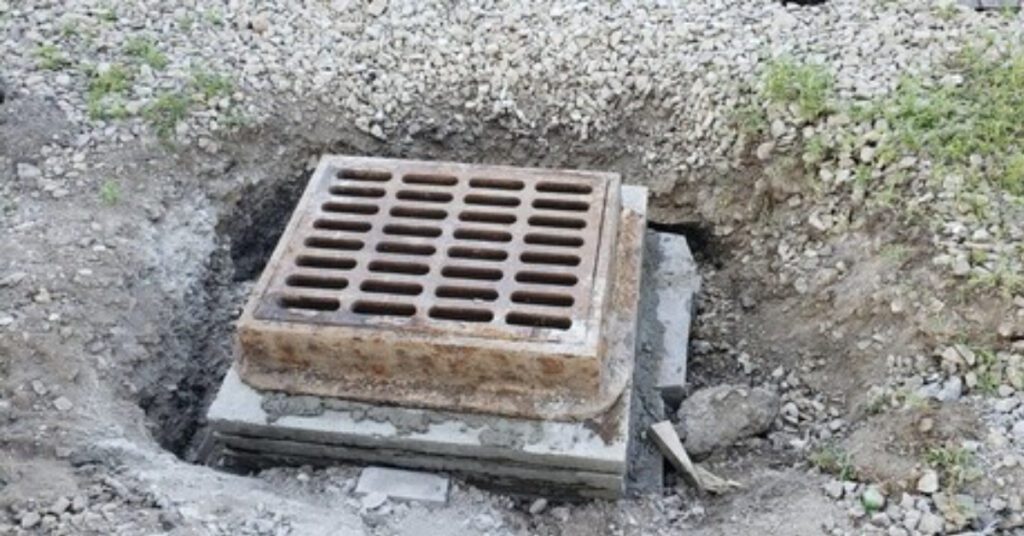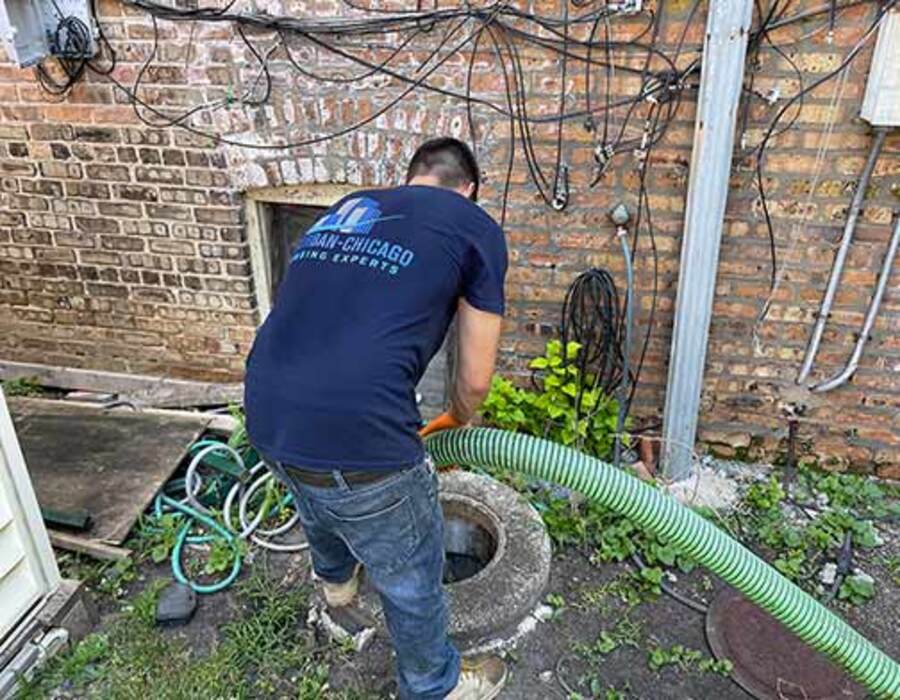How to Clean a Catch Basin for Best Environmental Management
Catch basins are key to preventing flooding by collecting rainwater and debris before it enters the stormwater system.
If you notice standing water, slow drainage, or bad odours, it might be time to clean your catch basin.
In this guide, we’ll walk you through cleaning steps, explain why it’s important, and offer tips for proper maintenance.
How to clean a catch basin?
To clean a catch basin, remove any debris from the grate, then use a shovel or rake to clear out the bottom. Ensure water flows freely before replacing the grate. For heavy clogs, call a pro.
Key Takeaways
- Catch basins are vital for stormwater management, but they can easily become clogged with debris.
- Regular cleaning is important to prevent flooding, drainage issues, and environmental damage.
- Cleaning a catch basin can be done using basic tools, but it may require professional help for deeper clogs.
Understanding the Importance of Catch Basins
Before diving into the cleaning process, it’s important to understand what catch basins are and why they need regular maintenance.
A catch basin is a stormwater drainage device designed to collect water, sediment, and debris from streets, parking lots, and other paved surfaces.
They typically consist of a grated cover, a chamber, and a pipe that leads to the drainage system.
Catch basins are strategically placed in low-lying areas where water tends to collect, allowing them to efficiently manage rainwater runoff.
However, if these basins aren’t properly maintained, they can become blocked, causing flooding and property damage, as well as pollution in nearby waterways.
Why Do Catch Basins Need Cleaning?

Catch basins play a crucial role in managing stormwater runoff, which can carry debris like leaves, dirt, trash, and even oil.
Over time, the basin can collect large amounts of material that can obstruct water flow and lead to problems such as:
- Flooding: Clogged basins can cause water to back up and overflow onto streets or properties.
- Increased Pollution: Blockages can prevent pollutants from being properly filtered out, resulting in dirty water flowing into rivers or lakes.
- Damage to Infrastructure: If water cannot flow freely, it can cause damage to the catch basin, pipes, or other parts of the stormwater system.
By cleaning the catch basin regularly, such as scheduling catch basin cleaning in Miramar or catch basin cleaning in Kendall, you help prevent blockages and ensure your drainage system continues to work efficiently.
Tools You’ll Need to Clean a Catch Basin
To clean a catch basin, you’ll need a few basic tools. The level of cleaning will depend on how much debris has accumulated in the basin. Here are some essential tools to have on hand:
- Gloves and Protective Gear: Storm drains can contain dirt, bacteria, and sharp objects. Gloves are essential to protect your hands, and you may want to wear boots or safety goggles depending on the situation.
- Shovel or Trowel: A shovel or trowel is useful for scooping out debris from the basin. It’s important to remove leaves, branches, and trash before attempting to clean further.
- Drain Snake or Auger: If you suspect there’s a deeper clog in the pipes beneath the catch basin, a drain snake or auger will help clear it.
- Garden Hose: A garden hose with a high-pressure nozzle can help flush out remaining dirt and debris from the basin.
- Pressure Washer (Optional): For a deeper clean, a pressure washer can help blast away built-up debris, sediment, or oils stuck to the basin’s walls.
Step-by-Step Guide to Cleaning a Catch Basin
Follow these steps to ensure that your catch basin is cleaned properly and is functioning as it should:
Step 1: Ensure Safety First
Before starting the cleaning process, make sure to wear the appropriate protective gear.
Gloves are essential, as you will be handling debris and dirt that could contain harmful bacteria or sharp objects. If the basin is located near traffic, be cautious of your surroundings.
Step 2: Remove Surface Debris

Begin by lifting the grate on top of the catch basin. The grate will usually be bolted or can be lifted with a crowbar.
Once removed, inspect the area for any large debris, such as leaves, twigs, or trash, that may have accumulated on the surface.
Use a shovel or your hands (while wearing gloves) to remove the debris. It’s important to clear the top layer first to make the rest of the cleaning process easier.
Step 3: Inspect the Basin for Clogs
Once the surface debris is removed, check the basin itself for any blockages. If you see a large buildup of dirt, sand, or sediment, it’s a sign that the basin needs a deeper cleaning. For effective results, consider using the best interceptor cleaners in Fort Lauderdale, who specialize in thoroughly clearing out blockages and ensuring proper system function.
You may also find that the inlet pipe leading into the basin is clogged. This is a common issue and may require further tools like a drain snake to clear.
Step 4: Flush the Basin
Once you’ve cleared the visible debris, it’s time to flush out the basin.
Attach a garden hose with a high-pressure nozzle or use a pressure washer to rinse the basin and any remaining debris out.
Start from the top of the basin and work your way down. If the basin has a deep sump, make sure to rinse it thoroughly to remove any accumulated sediment or dirt.
Step 5: Check the Drainage System
Once the water has been flushed through, check the water flow to ensure that it is draining properly.
If you notice that water is still standing in the basin or not flowing efficiently, there may be a clog deeper in the system.
Use a drain snake to clear out any blockages from the pipe that leads away from the basin. This step may require professional help if the clog is too deep or stubborn.
Step 6: Reattach the Grate
Once the basin has been cleaned and the drainage system is clear, reattach the grate securely.
Make sure it’s tightly in place to prevent debris from falling into the basin. It’s important that the grate is properly aligned to avoid any accidents or further obstructions.
Frequently Asked Questions
1. How often should I clean my catch basin?
It’s recommended to clean your catch basin at least once every few months, especially during fall or after heavy rain. If your area is prone to stormwater runoff, more frequent cleaning may be needed.
2. Can I clean my catch basin myself?
Yes, with the right tools and safety equipment, you can clean your catch basin. However, if you encounter deep clogs or structural damage, it’s best to contact a professional.
3. What is the best way to prevent a catch basin from getting clogged?
Regular maintenance, such as clearing debris and installing a drain guard, can help prevent clogs. Ensuring that the area around the drain is kept clear will reduce the risk of obstruction.
Conclusion
A clean catch basin is essential for maintaining proper drainage, preventing flooding, and protecting the environment.
Regular cleaning and maintenance can prevent costly issues and ensure that your stormwater system functions efficiently.
By following the steps outlined in this guide, you can keep your catch basin clean and operational, protecting your property and the environment.
Whether you’re dealing with leaves in the fall or sediment buildup after heavy rainfall, keeping your catch basin clean is key to a well-functioning drainage system.
